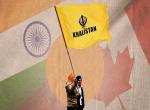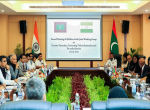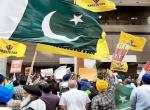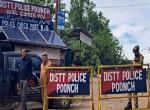The government has stated that recent distress migrations of northeastern Indians were triggered by electronic messages originating from Pakistan. Investigators have found that the first hints of pogrom-style killings appeared on Pakistani internet forums, and rapidly spread to India as part of a coordinated psyops offensive. The modus operandi was vaguely familiar: doctored images and vitriolic texts flooded telecommunications networks, gaining credibility before law enforcement agencies could react. The apparent purpose was to stir up public anger in an already polarized setting and prepare the political mood for an outbreak of communal violence. During 1989, Pakistan had adopted similar methods when it broadcast television footage of anti-communist revolts in Eastern Europe and urged Kashmiri Muslims to likewise rise up against New Delhi.
What intelligence agencies now need to assess is whether their Pakistani counterparts were merely out to embarrass India, or if the scare campaign had a deeper purpose. It is possible that the Inter Services Intelligence, if it was involved, has no strategic end-game regarding present tensions between Bangladeshi immigrants and Bodo tribesmen. The agency’s covert operations cells might just be taking opportunistic advantage of the situation in Assam. Provided Indian authorities maintain public order, the matter might rest there. However, past experience of ISI psyops suggests that the agency rarely desists from coordinating its propaganda offensives with paramilitary action. Its favourite tactic is to combine persistent low-visibility subversion with sporadic high-visibility attacks, conducted on a deniable basis using local assets or expendable mercenaries.
A Suggestive Pattern
On at least three occasions, the ISI is thought to have used psychological and paramilitary operations in a synergistic role. The first was in late 1983, when masked turban-wearing gunmen hijacked buses in Punjab and selectively killed Hindu passengers. Since the attacks occurred amidst worsening Hindu-Sikh relations, most commentators assumed that they were carried out by Sikh separatist militants. However, eyewitness accounts cast doubt on this theory: the killers’ language and demeanour had indicated a military background. Furthermore, local intelligence was unable to identify them, suggesting that they were not based in Punjab itself. As such attacks continued into early 1984, arguments were advanced that the masked gunmen could have been Pakistani Punjabi mercenaries, working as agent provocateurs in a ‘false-flag’ campaign.
Irrespective of whether the hijackers were Indian or Pakistani, what is unquestionable was that their actions were intended to deepen Hindu-Sikh tensions. Furthermore, it is now generally acknowledged that Islamabad did intervene covertly in Indian Punjab. Throughout the 1980s and ‘90s, radio broadcasts expressed support for Sikh separatism. Pakistani scholars wrote about a possible second partition of India along Hindu-Sikh lines. ISI officials posted in Western capitals funded Sikh separatist publications and organized publicity events. These propaganda initiatives were matched operationally by linking terrorist attack cells to ISI networks. One occasion in 1992 saw two ISI operatives being killed in the company of a Sikh terrorist leader. Although Islamabad initially tried to deny their Pakistani nationality, it relented after protests from their families.
The second case of (suspected) ISI subversion being used to camouflage (largely proven) paramilitary action occurred in Mumbai in 1993. A spate of rioting plunged Hindu-Muslim relations in the city into a downward spiral. With innocent Muslims having suffered disproportionately, some of their co-religionists within the criminal underworld plotted retaliation. Led by Dawood Ibrahim, they organized eleven synchronized blasts across the city in March 1993, targeting Hindu-majority areas. The explosive material used was military-grade, suggesting a state supplier. A detonator recovered by Indian investigators from one of the blast sites was traced to Pakistan army ordnance stores.
What is interesting is that the pre-blast riots had occurred in two distinct waves. The first, in December 1992, was spontaneous; a symptom of country-wide religious polarization following the Babri Masjid demolition. The second wave, in January 1993, appeared to have been planned: it began with knife fights in the Mumbai docks, which expanded into pitched battles across the city. Investigators noted that the docks were a stronghold of Dawood Ibrahim, whose smuggling operations were based there. Although a causal relationship was difficult to prove, circumstantial evidence indicated that Ibrahim’s men had deliberately triggered the second round of rioting. If true, this hypothesis would suggest that the January 1993 riots were a classic intelligence provocation operation.
Ibrahim himself is believed by this time, to have come under ISI influence. Defectors from his group later revealed that the Pakistani government had impounded his shipping fleet, thus gaining leverage over him. The men who actually planted the bombs were trained in explosive-handling in Pakistan, but their passports contained no stamps by Pakistani immigration authorities. Surmising on this, one reputed American commentator has noted that such free movement could only have been facilitated by powerful elements within Pakistani state institutions. 1 The ISI is the logical suspect.
The third case is Mumbai 2008. It is now known that the ISI was aware of Lashkar-e-Toiba’s plan to attack Mumbai. Testimony from Zabiuddin Ansari, one of the planners, even states that the agency provided the weapons and ammunition used in the attack and that two ISI officers personally supervised its implementation from a control room in
Karachi. The Indian prime minister and national security advisor have long asserted that the Mumbai 26/11 attacks bore signs of state support. Even if the Pakistani government as a whole was not involved, highly influential elements within it appear to have been.
This brings the context of the attacks into sharp focus. During the fall of 2008, alarm had been growing in India about a possible terrorist threat from Hindu extremists. These concerns were exploited by members of the political class, to deflect attention from the government’s failure in preventing jihadist attacks. The Mumbai gunmen played to this discourse, forging identity cards under Hindu names and wearing saffron wristbands. The attack planners had calculated that once the gunmen were killed by Indian police, these ‘clues’ would mislead the subsequent investigation and media commentary.
In this regard, it is important to note that the initial reaction from Islamabad was to reject any possibility of Pakistani involvement. The killings in Mumbai were projected as an outcome of domestic instability within India. Seen from hindsight, such discourse (later discredited by theconfession of AjmalKasab, one of the gunmen) seems to fit the thesis that the ISI masks its paramilitary activities with calibrated propaganda offensives.
The Logic of Pakistani Psyops
Reacting to claims made over the Assam crisis, Pakistani officials have accused Indian authorities of evading responsibility. They insist that India address its own domestic problems rather than attribute culpability to Pakistan. Such demands would be credible, if they were not preceded by episodes such as Kargil ’99 and Mumbai ‘08. On both occasions, Pakistani diplomats had initially ridiculed charges of cross-border involvement and accused India of spoiling bilateral relations. However, once the immediate crisis had subsided and international attention had drifted elsewhere, Islamabad found it expedient to quietly admit to such involvement. It did so in order to claim ownership over a spoiling action that had disrupted bilateral relations and driven up the price of further engagement.
Therein lies the real ‘core’ issue that bedevils India-Pakistan relations. It makes sense for the Pakistani security establishment to occasionally bring bilateral rapprochement to a shuddering halt. There are three reasons for this obstructionist stance:
- Spoiler actions derail grassroots-level peace initiatives and stop them from assuming an independent forward momentum, which Islamabad might later not be able to regulate. Civil activism for friendly bilateral ties is thereby held in check.
- These actions also drive a political wedge between India and its main security partners. They compel countries such as the US and UK to abandon New Delhi and instead assume a neutral refereeing posture on Indo-Pak tensions – one which invariably glosses over past jihadist transgressions against India.
- Lastly, spoiler actions cement the Pakistan army’s domestic image as protector of the people against a vengeful Indian government and public. Certain actions such as Mumbai ‘08 are also meant to serve narrower objectives, such as deflecting domestic Islamist militancy onto a foreign (and thus ‘legitimate’) target.
In each of the cases outlined above, Pakistani officials loudly proclaimed that terrorist attacks in India resulted from domestic tensions. This consistency in emphasizing India’s internal fissures is revealing: it implies that at the governmental level, Pakistan views India as an artificial state, riddled by identity-based conflicts. Such views, if they actually do dominate official Pakistani thinking, would represent a colonial inheritance from the British Raj. During the 1940s, Raj officials had derided secular Indian nationalism as a doomed experiment. They predicted that, post-independence, India would fragment under the centrifugal influence of its own diversity. Building a common polity from a multi-ethnic, multi-lingual and multi-religious population was thought to lie beyond the capabilities of the country’s native leaders. So far, this prediction has been proven wrong, but continuing societal rifts provide hope to some ISI officers that it might yet come true.
Thus, while Pakistani writers claim that Indian elites have never accepted the logic of Partition, the same can be said of Pakistani elites. If India refuses to endorse the principle of religious exclusion that underwrote Pakistan’s formation, Pakistan has also refused to recognize the legitimacy of the secular nationalism that keeps India together. The ISI, if it orchestrated the hate campaign that prompted thousands of northeastern Indians to flee to their home states, was merely acting in conformity with Pakistani ideological dogma.
What Indian security forces now have to prepare for is the more serious possibility that this might not be the end of it. As might have occurred previously in Punjab, there is a chance that ISI operatives shall create a communal flashpoint through agent provocateurs. Reports suggest that the Pakistani agency is keen to erase international memories of the Mumbai ’08 attack. It hopes to achieve this by facilitating a major act of domestic terrorism in India, using only local assets. Islamabad could then argue, with all apparent reasonableness, that even if the Mumbai attack had featured Pakistani involvement, India still needs to put its own affairs in order. Towards this, ISI officials have already met with leaders of the Communist Party of India (Maoist) in Dubai, to discuss possible collaboration. The Maoists have allegedly asked for military-grade explosive, and the ISI is believed to have asked in turn that the Maoists use these explosives to attack economic targets, such as oil refineries, so as to attain maximum strategic impact.
Even if the ISI were to support the Maoists however, the main focus of its psyops would still be on identity-based conflicts rather than ideology-based ones. The agency has plenty of experience in exploiting ethnic and linguistic fault lines to its own advantage. One example would be the East Pakistan civil war (1971), when the ISI organized Bihari Muslims into vigilante groups to fight Bengali separatists. Another would be its covert support for Mohajir militancy in Karachi during the 1980s – a tactic intended to contain Sindhi and Pashtun nationalism. However, the agency has little insight into ultra-leftist discourse, having never confronted a communist insurgency. Its ability to relate to the peasant and tribal revolution in central India is likely to be quite limited. Moreover, class struggle is not an issue that ISI strategists would want to publicize, as it might backfire on Pakistan, given the country’s own quasi-feudal social structure. For these reasons, it would make sense if the agency focused on Hindu-Muslim/Bodo-Bengali tensions.
Further ‘Rogue’ Operations Likely
Following the Mumbai ’08 attack, the then ISI chief told US officials that rogue officers from the agency might have been involved. This same argument had previously served Pakistan well in 1993, when ISI involvement with Dawood Ibrahim had attracted American queries. Basically, the ‘rogue operative’ thesis capitalizes on the tendency of Western listeners to equate such operatives with ‘enemies of the state’. Western analysts assume that if individuals within the ISI support terrorist attacks, Pakistani authorities would seek to identify and pursue them. Instead, India’s experience has so far belied this paradigm – although some ISI paramilitary activities might have been carried out without express sanction from above, these have not resulted in punitive measures against the officials involved. Rather, the immediate consequence tends to be a reshuffling of agency postings, to throw off Indian and Western counterintelligence efforts against the ‘rogues’.
There is a strong possibility that ‘rogues’ within the ISI will plan and assist a major act of terrorism in India, using local proxies as the triggermen. Such a scenario may not occur in the short term (i.e. the next three months), since the renewed India-Pakistan dialogue has not yet made much progress. A major improvement in atmospherics however, such as a summit between civilian politicians of the two countries, would likely set attack preparations afoot. By a spoiler action, the Pakistan army and ISI would want to emphasize their veto rights over any political process that bypasses them. Given the ongoing instability in India, caused by poor governance and communal polarization, they are likely to have many opportunities for combining psychological and paramilitary operations. The Bodo-Bangladeshi conflict shall probably be just one among these.
Dr. Prem Mahadevan is working with Centre for Security Studies, Zurich
Endnotes
- Jessica Stern, ‘Pakistan's Jihad Culture’, Foreign Affairs, November/December 2000, accessed online at http://www.hks.harvard.edu/fs/jstern/pakistan.htm, on 20 August 2012.
Published Date: 22th August 2012










Post new comment